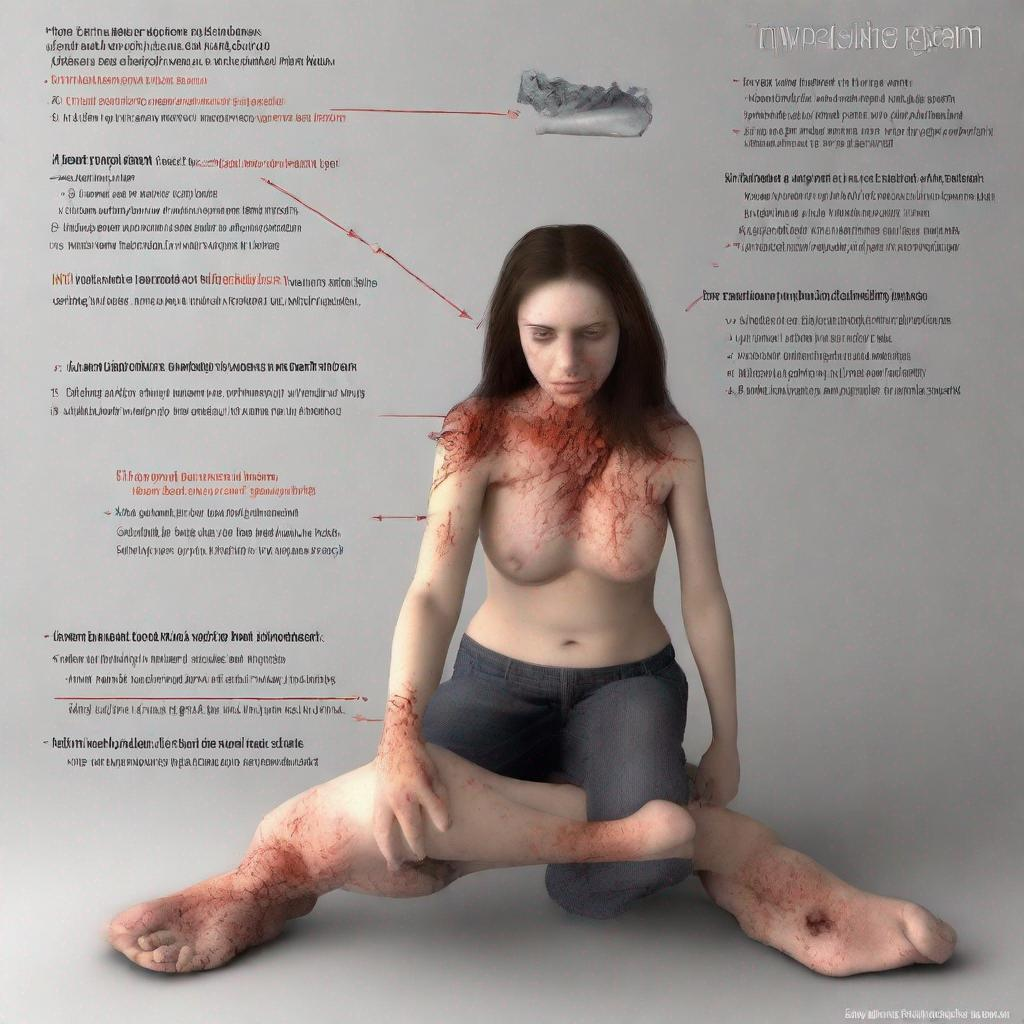## Self-Inflicted Injuries
### Introduction
Self-inflicted injuries, also known as self-harm, refer to deliberate acts of injuring one’s own body with the intent to harm, not suicide. Common symptoms include scars, lacerations, bleeding, infection, and pain, along with emotional distress.
### Diagnosis
Self-inflicted injuries can be diagnosed based on a physical examination and patient history. Physical signs, such as wounds or scars, may be visible on body parts like the wrists, arms, hands, legs, feet, thighs, or abdomen. Doctors who typically perform such examinations include primary care physicians, psychiatrists, and mental health counselors.
### Prevention
Prevention of self-inflicted injuries focuses on addressing underlying factors that contribute to such behaviors. These include:
– Mental illness: Managing mental health conditions reduces the likelihood of self-harming as a coping mechanism.
– Trauma: Providing support and treatment to individuals who have experienced trauma can mitigate the risk of self-injury.
– Bullying and abuse: Creating safe and inclusive environments and providing resources to address bullying and abuse can help prevent self-harming behaviors.
### Treatment
Treatment for self-inflicted injuries is tailored to the individual’s needs and may include:
– Psychotherapy: Dialectical behavior therapy and cognitive behavioral therapy help individuals develop coping skills and alternative ways to express distress.
– Dialectical behavior therapy (DBT): DBT is a type of psychotherapy that teaches skills to help people regulate their emotions, tolerate distress, and improve their interpersonal relationships.
– Cognitive behavioral therapy (CBT): CBT is a type of psychotherapy that helps people identify and change negative thoughts and behaviors.
– Psychopharmacology: Antidepressants or other medications can be used to manage underlying mental health conditions that contribute to self-harming.
– Crisis support: Access to hotlines, crisis centers, and support groups can provide immediate assistance and prevent escalation.
– Hospitalization: In severe cases, hospitalization may be necessary to ensure safety and provide intensive treatment.
### Complications
Complications of self-inflicted injuries can range from physical harm, infection, and disfigurement to psychological consequences.
– Physical: Wounds can become infected or bleed excessively, requiring medical attention. Repeated injuries to sensitive body parts can damage nerves or tendons. In severe cases, self-harm may lead to death.
– Psychological: Self-inflicted injuries can perpetuate a cycle of distress and self-loathing. They can interfere with daily functioning, relationships, and overall well-being.
### Conclusion
Self-inflicted injuries are a complex issue with both physical and psychological consequences. Diagnosis and treatment require a compassionate and comprehensive approach, involving healthcare professionals and mental health specialists. Prevention efforts should focus on addressing underlying mental health issues, providing support to those who have experienced trauma, and creating a society that prioritizes mental well-being.




